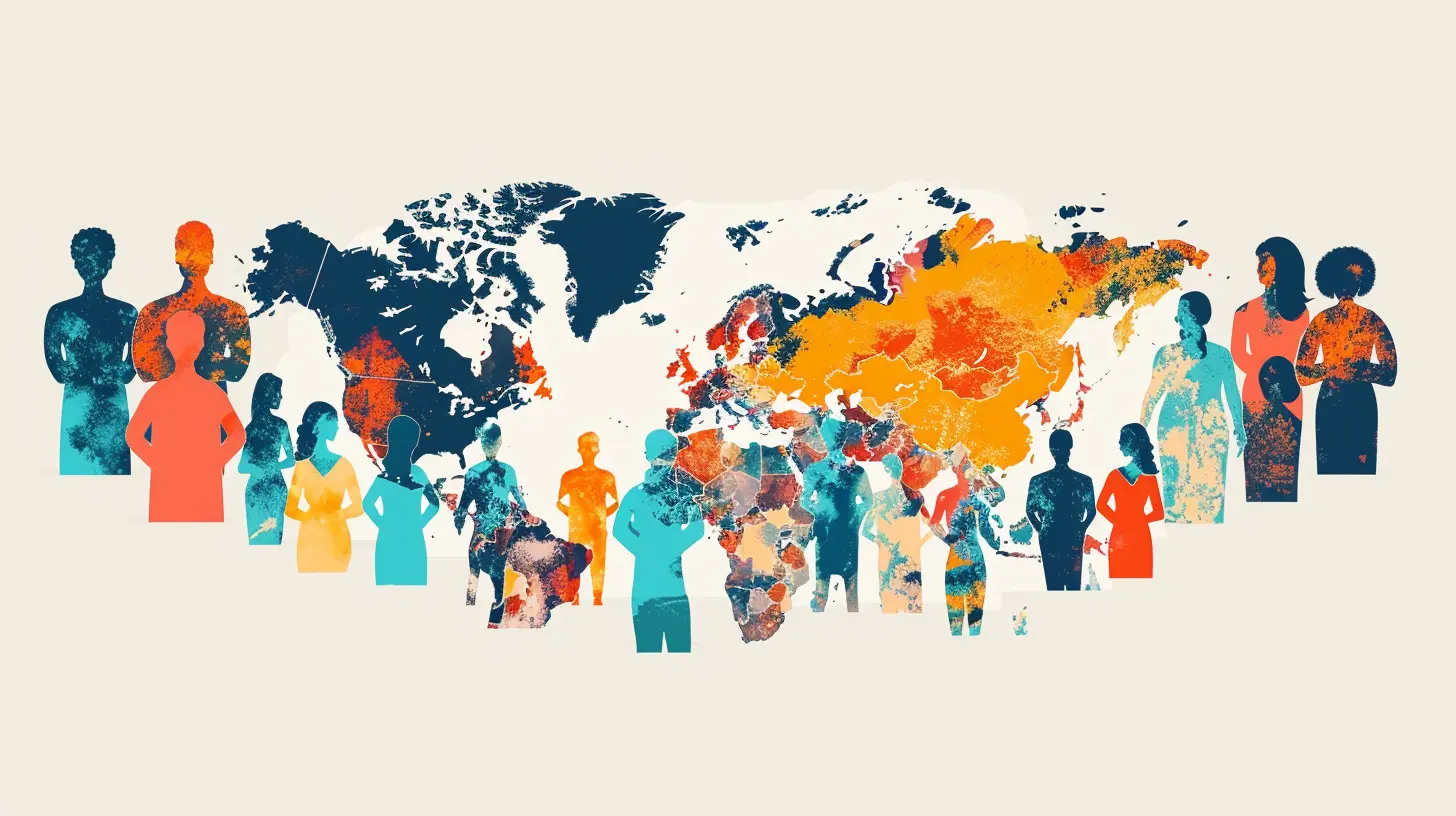Understanding Cultural Differences in Global Customer Service
31 October 2025
Have you ever had a conversation with someone from another country and felt like you were speaking different languages—even if you were both technically speaking English? That’s cultural differences in action. Now take that scenario and place it into a customer service context in a global business. Things can get tricky, right?
In today’s interconnected world, businesses serve customers from all over the map. That means understanding cultural differences in global customer service isn’t just “nice to have,” it’s essential. Let’s break it down into bite-sized, relatable chunks, so you can sharpen your customer service game for the global stage.
Why Cultural Awareness Matters in Customer Service
Imagine walking into a restaurant, and the waiter completely ignores you while attending to another customer with great enthusiasm. You’d feel undervalued, right? Well, in some countries, that’s just standard protocol—it’s not personal. But without understanding that, it’s easy to misinterpret the intention.The same thing applies to customer service. Miscommunication, unintentional offenses, and unmet expectations often stem from ignoring cultural nuances. That’s why cultural awareness is so important when dealing with customers from different backgrounds.
When we tune into cultural cues, we build stronger connections, avoid misunderstandings, and create a truly inclusive customer experience that keeps people coming back for more.
The Building Blocks of Cultural Understanding
To truly get cultural differences, we need to understand a few key concepts. Think of these like the foundation of a house. If the base isn’t solid, the entire structure wobbles.1. High-Context vs. Low-Context Cultures
Ever heard the phrase “read between the lines”? Some cultures practically expect it. Others? Not so much.- High-context cultures (like Japan, China, and the Middle East) rely heavily on indirect communication. Non-verbal cues, tone, body language, and hierarchy matter a lot.
- Low-context cultures (like the U.S., Germany, or Scandinavia) prefer direct communication. People say what they mean, and actions align with words.
🔍 So, if you’re used to blunt honesty and you’re working with customers from a high-context culture, you might come off as rude—even if that’s not your intent.
2. Individualism vs. Collectivism
This one’s a biggie. It affects how people view themselves in relation to others, including your business.- Individualistic cultures (e.g., U.S., UK, Australia) value personal achievement. Customers may expect personalized service and express their opinions freely.
- Collectivist cultures (e.g., China, Latin America, India) prioritize group harmony. Customers may avoid confrontation and may not directly complain—even if they’re unhappy.
🎯 That means if a customer doesn’t speak up, it doesn’t mean they’re satisfied. You might need to dig a bit deeper.
3. Power Distance
This has to do with how people perceive hierarchy and authority.- In high power-distance cultures (like Russia, India, or the Philippines), decision-making is often centralized. Customers may expect a more respectful, formal tone.
- In low power-distance cultures (like Denmark or New Zealand), people are more comfortable challenging authority and expect a more casual tone.
🤝 So don’t be surprised if a customer from a low power-distance culture starts a live chat with: “Hey there, I’ve got a question!”
4. Time Orientation
Time isn’t viewed the same everywhere. Some cultures are monochronic (think: time is money), while others are polychronic (more flexible with time).- Monochronic cultures (e.g., Germany, USA) value punctuality, deadlines, and fast responses.
- Polychronic cultures (e.g., India, Mexico) are more relationship-focused. Agile timelines and informal scheduling are common.
⌛ If a customer doesn't respond instantly, it might not be rudeness—it could just be a different understanding of time.
How Cultural Differences Affect Customer Expectations
Let’s dive into how all this plays out in real life—from emails to phone calls to live chats.Communication Style 🗣️
Tone is a tricky beast. In some places, being “professional” means being formal and distant. In others, it means being warm and friendly.- A British customer might appreciate a polite, restrained tone.
- An American client may find that same tone cold or uninterested.
- Someone from Italy might expect enthusiasm and emotional expression.
💡 Tip: When in doubt, mirror the customer’s tone. If they’re formal, match it. If they’re casual, loosen up a bit.
Response Time Expectations ⏱️
In cultures where time is tightly managed, like in Japan or Germany, customers expect quick and efficient responses. But in areas where conversations unfold more slowly, like Brazil or Nigeria, people may not expect lightning-fast replies.📬 Tip: Set clear expectations up front. If it’s going to take 24 hours to respond, let them know. Transparency builds trust.
Customer Complaints And Feedback ✍️
While a customer in New York might tell you exactly what went wrong, someone in Thailand may hesitate to criticize because they want to “save face.”🌍 Tip: Provide multiple channels for feedback, including anonymous options. That makes it easier for everyone to share their thoughts in a way that feels comfortable.
Loyalty And Relationships 🤝
In some cultures, like Saudi Arabia or China, relationships and loyalty are everything. Personal connections matter more than price or even product features.🌐 Tip: Invest time into building a rapport. A birthday greeting, remembering a previous conversation, or simply asking how their day is going can go a long way.
Adapting Your Customer Service Strategy
You don’t have to be an anthropologist to succeed in global customer service—but you do need to be flexible, observant, and open-minded.Here are some actionable tips to help you adapt like a pro.
1. Train Your Team Regularly
Cultural sensitivity training should be a regular thing, not a one-off workshop. Keep your team up-to-date on global etiquette, tone, customs, and behaviors.🎓 Practice sessions, role-playing, and real-world scenarios help your team stay sharp and ready for anything.
2. Use Localized Scripts (But Don’t Sound Like a Robot)
Scripts can guide your team, but flexibility is key. Localizing scripts with culturally appropriate greetings, names, and sign-offs can make your service feel more personal.✍️ Just make sure your reps sound human, not like automated bots.
3. Empower Multilingual Support
Language is one of the most obvious cultural barriers. Offering support in your customer’s native language shows respect and removes friction.🌎 Utilize bilingual reps, AI translation tools, or third-party services to break down language barriers.
4. Customize Customer Journeys
Not all customers take the same path to solving a problem. Use CRM tools to personalize journeys based on cultural preferences, time zones, and communication styles.📊 Data-driven insights can help you predict what certain customer segments value most.
5. Be Humble and Ask Questions
If you’re unsure how to interact with a customer from a different culture—ask. Most customers appreciate the effort more than a clumsy guess.🧠 Keep the mindset of a student. The world is your classroom.
Real-Life Examples That Hit the Mark
Example 1: Amazon Japan
Amazon adapted its entire customer service model for Japan. Formality, politeness, and prompt delivery were prioritized. Their emails include honorific language and reflect Japanese business etiquette.Lesson? What works in one region won’t necessarily work elsewhere.
Example 2: Airbnb’s Multilingual Support
Airbnb offers customer support in dozens of languages. Why? Because they know that trust starts with being understood.They also take cultural sensitivities into account when resolving disputes. Someone from a collectivist culture might not bring up issues unless prompted—Airbnb knows to gently inquire.
The Bottom Line
Global customer service isn’t about translating English into other languages and calling it a day. It’s about creating a human connection that transcends location, language, and values.Cultural differences aren’t obstacles—they’re opportunities. When we understand where people are coming from, we serve them better. We make them feel seen, heard, and respected. And that? That’s the secret sauce of exceptional customer service.
So the next time you’re chatting with a customer halfway across the world, remember: it’s not just about solving a problem. It’s about doing it in a way that feels homegrown, respectful, and real to them.
Because great service isn’t one-size-fits-all—it’s made to measure.
all images in this post were generated using AI tools
Category:
Customer ServiceAuthor:

Rosa Gilbert
Discussion
rate this article
1 comments
Solenne McHugh
Embracing diversity enhances customer service joyfully!
November 9, 2025 at 12:45 PM

Rosa Gilbert
Thank you! Embracing diversity indeed fosters a richer understanding of customer needs, leading to more joyful and effective service.


